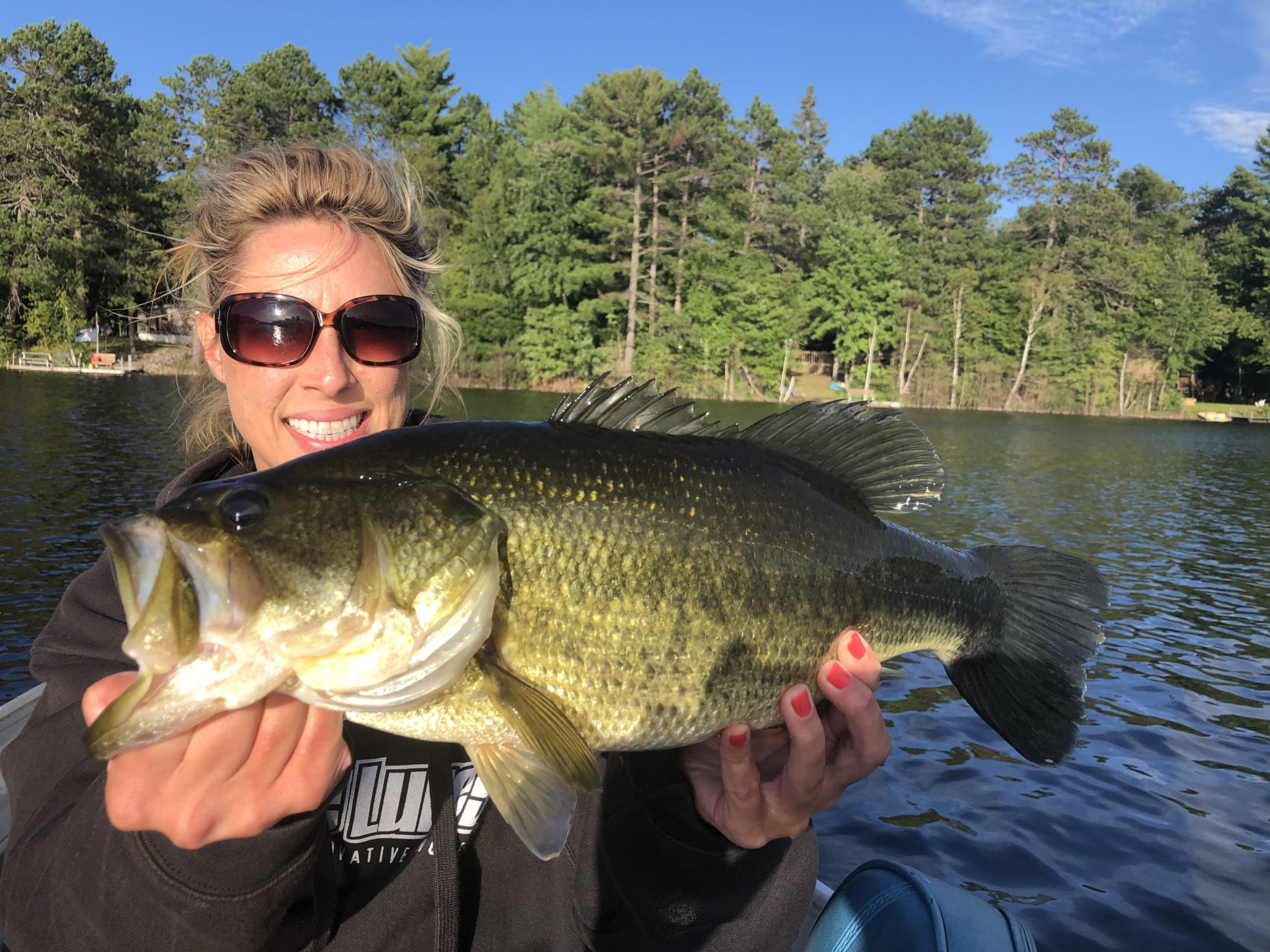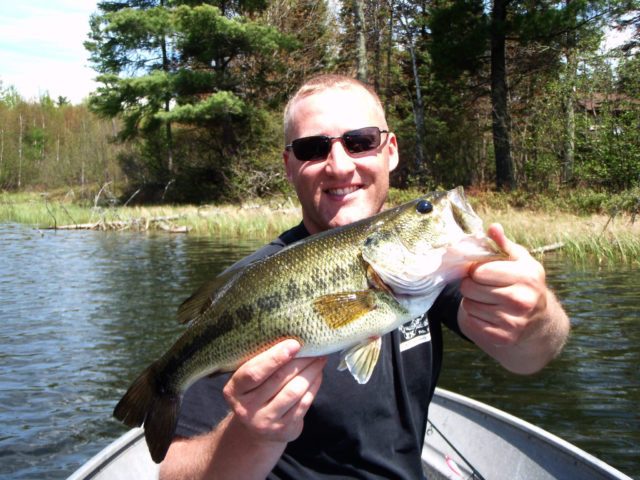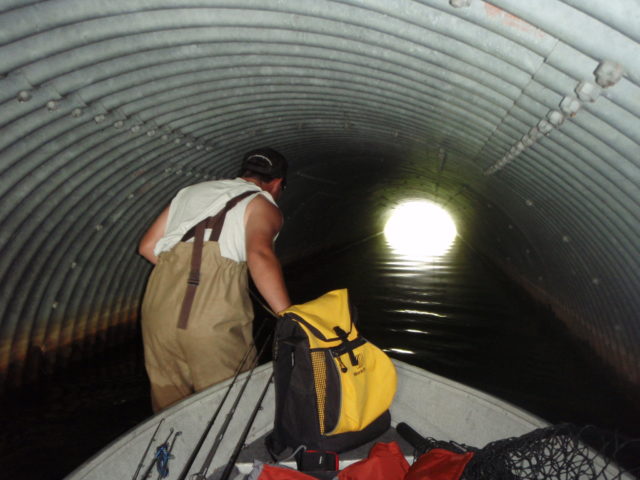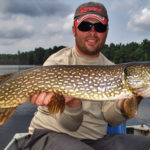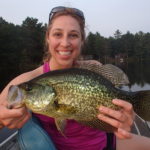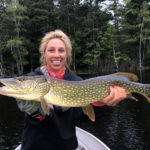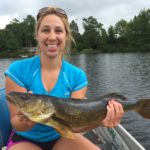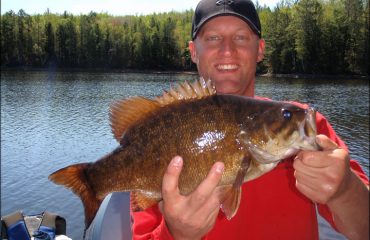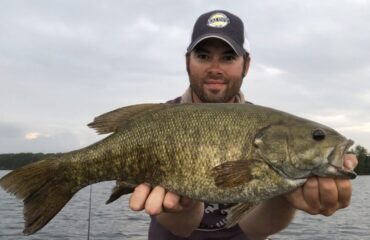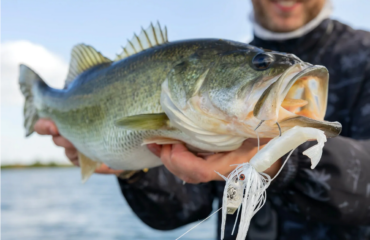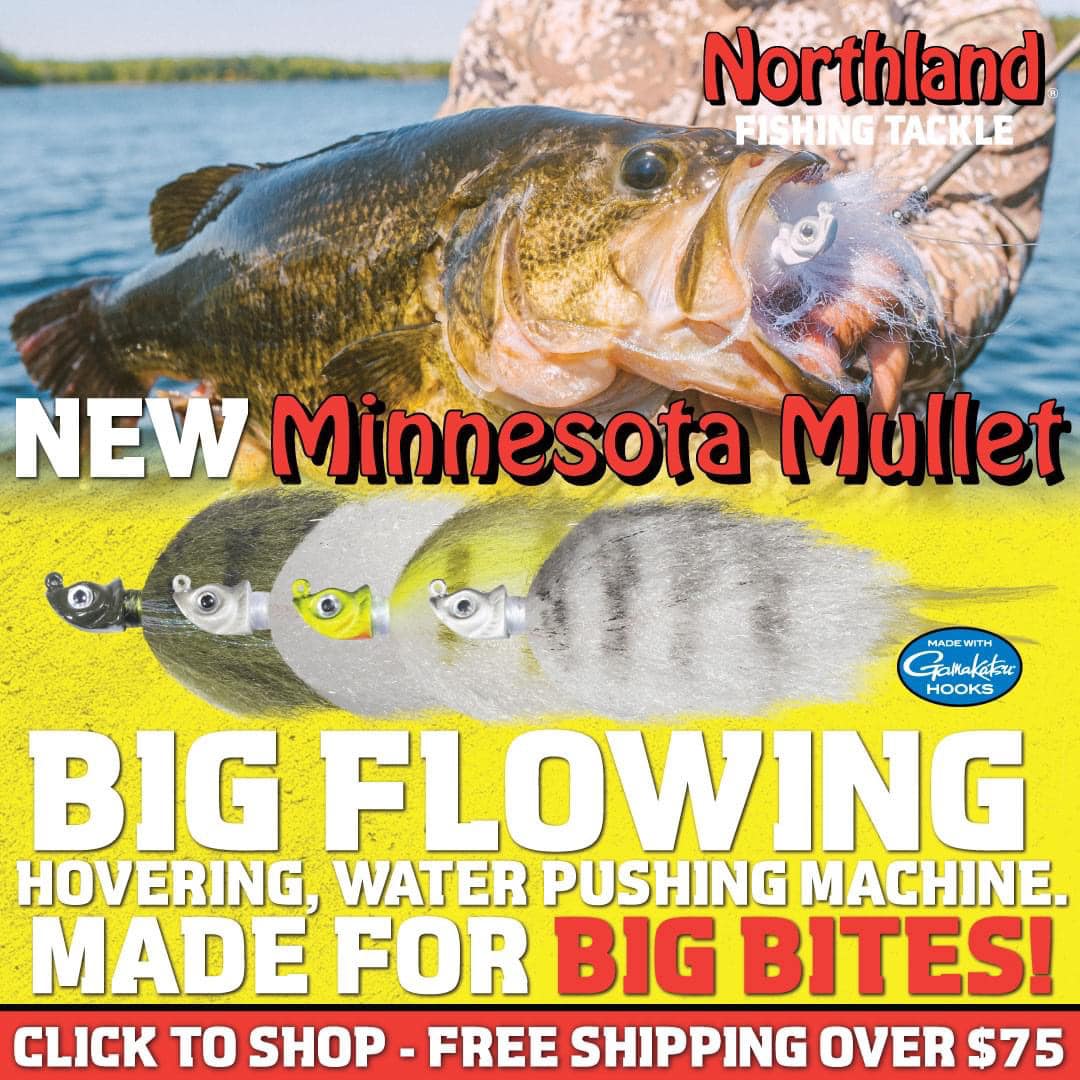Small Lakes, Big Bass
Small lakes abound throughout the Upper Midwest, and are overlooked to the bass fishing world. Due to their small acreage, horsepower restrictions, difficulty of access, or limited fisheries, they remain the least pressured waters and fishing destinations for truly giant largemouth bass.
Study the maps and landscapes of your favorite fishing regions in Wisconsin, Minnesota, Michigan, or elsewhere. Saturated and littered in between the largest, most popular, and easiest boat-accessible public waters are small lakes filled with bass fishing delight.
Depending on where in the country you fish, judging lake sizes is arbitrary. In the glacial regions of Northern Wisconsin, I consider small lakes to be 200 acres or less. Elsewhere in the country, small lakes might be a couple thousand acres, or nothing else but small artificially managed, or man-made private ponds.
Each year, many of the biggest largemouth bass are caught from small public and private lakes. These waters are best suited for small watercraft rather than large, expensive boats.
Small Lakes are Everywhere
Each day we tow our rigs or drive past these unexploited largemouth bass paradises. In northern Wisconsin surrounding my home waters of Minocqua / Woodruff, we have hundreds of small accessible lakes within a 50 mile radius. In the entire state for instance, there are perhaps thousands of them. Many small waters are non-accessible with my large Ranger guide boat due to launching difficulty, but suitable for small craft and carry-in options. When there is a will to fish, there is a way!
We have a lifetime of fishing opportunities with potential for bass in the 4 to 8 lb. range. Many trophy largemouth are caught from them annually. Every year, we make an attempt at fishing a few of these pot holes and exploring some new ones out of my 12 ft. row boat with electric motor, 14 ft. modified jon boat with casting decks powered by small outboard and bow-mount trolling motor, or 16 ft. Lund tri-hull. Each gets me into the water where the roughest and unimproved access allows. Always bring a buddy with on these trips, not only for safety reasons and company, but mainly for assistance and extra sets of hands to help with launching if the lake doesn’t have a suitable shoreline approach for backing in boat and trailer. At that point, we lift the boat off from trailer and slide it in. Occasionally, portaging in thru the woods is an only option. Bringing a buddy makes the trips possible.
Unless the town or lake association has an ordinance, you can get away with no wake or small outboards on lakes that are 50 acres or larger.
Leave the big boat and all the fancy equipment behind. Hook up your little rig, and get into the small lakes you’ve been bypassing in favor of always fishing the most pressured bass waters. Admittedly, I’ve been guilty of this many times.
If you want a shot at catching and releasing the biggest bass of your life without ever having to travel out of the Midwest, small lakes will be your best option, with many of them containing big largemouths that’ll never get harvested.
Locating and Finding Small Water
Long before I ever had Google maps or a smart phone, locating small lakes had never been a challenge. I was already towing a boat past many of them every day. Today the internet, Google maps, the gazetteer, Fishing Hot Spots booklets, and websites such as Lake-Link and other online communities have simplified our trip planning, data gathering and homework. Nowadays it’s much easier to locate lakes, get directions to access sites, and figure out a lake’s fishery. It’s also possible to explore the body of water online before ever dropping a boat into it.
When I got my drivers license, my goal each summer was to explore and make as many new fishing discoveries as possible. Throughout my high school, college, and pre-guiding days, I’d haul one of my small boats with a buddy and we’d navigate our way without technology thru dirt roads, deep into forests. While we did get lost and make a few wrong turns, we’d eventually reach our destinations and drop the small craft with electric trolling motor into them.
Those early efforts turned up a few spectacular waters containing fish up to 5-6 lbs. Other lakes meanwhile were only temporary fisheries, produced by drought years and mild winters that didn’t lead to winterkill. These shallow eutrophic lakes were only enjoyed briefly. In the last 4 years, these lakes and their monster largemouth froze to death. Such a shame! Some other lakes were complete duds, with zero life or potential to speak of, or the fishing was affected by natural causes such as foul weather or cold front those days. It seems that for every good lake, 2 or 3 duds will follow. Fisheries evolve, and smaller lakes undergo changes with more frequency. Whether it was good or not, most small lakes will be worth revisiting again at some point in your lifetime.
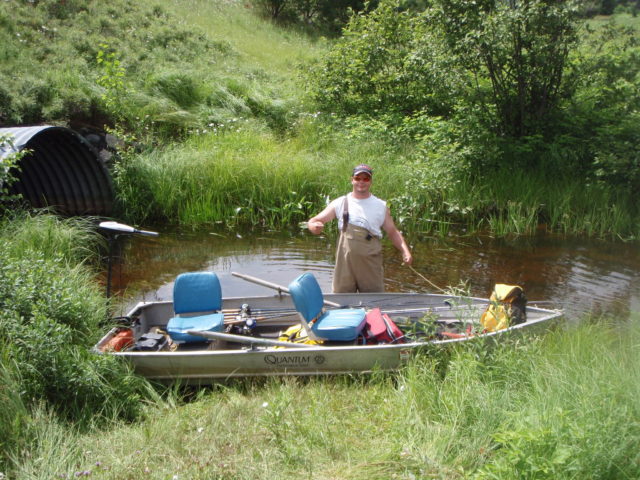
The best lunker ponds will be overlooked destinations, lightly or non-populated by residencies, and won’t have easy access off of main highways and boat traffic on them. Some have rougher access for small boat and trailer, others are undeveloped and only offer a carry-in site, or won’t have anything at all which you may have to portage into them through public lands, or enter them through small connecting streams and culverts like this.
Time, energy, and ambition are necessities for these unique fishing opportunities. Most anglers don’t have it in them, which is why they keep pulling their rigs to the easy-to-get-to, popular and heavily fished waters.
In my lifetime thus far, I’ve been able to explore several dozen small lakes through public or private accesses that have launches or none at all. Most are as large as 100 acres or more, and as small as 10 acre ponds. On average, one out of every five lakes seems to produce only big fish, while the rest only numbers or lower average sizes. I have not bothered returning to some lakes due to their lack of trophy potential.
Keep expectations realistic, and understand that not every small lake is capable of producing and rearing trophy largemouth. Several factors can limit the potential of a fishery. These negative characteristics can include their small surface acreage, lack of state management, no stocking of forage and other gamefish species, panfish stunting and imbalanced fisheries, infertility issues, forage limitations, and angling pressure and harvest. Note that small lakes never get stocked unless privately. Big fish are irreplaceable specimens, especially large female largemouth and other gamefish species that are relied upon annually to sustain the fishery. If harvested, the fishery meets its demise and will never be the same again.
Many small lakes rear other fish species. The best fisheries will have the potential for big northern pike, some muskies, walleyes, and very big panfish like this photo collection of small water trophies. Most small lakes in my neck of the woods are naturally reproducing fisheries for all species and do not get stocked, therefore catch and release must be prioritized even further. Harvesting fish like these from small lakes will decimate and ruin them.
Northwoods Seasonal Strategies
The best lunker ponds will be overlooked destinations, lightly or non-populated by residencies, and won’t have easy access off of main highways and boat traffic on them. On many good fisheries, dirt roads and logging roads that lead into them are common. Some have rougher access for small boat and trailer, others are undeveloped and only offer a carry-in site, or won’t have anything at all which you may have to portage into them through public lands, or enter through small connecting streams and culverts.
Fishing them is simple. Most are dominated by bluegill forage. You will not need to bring much tackle beyond a few rods and reels, and a small tackle box of lures.
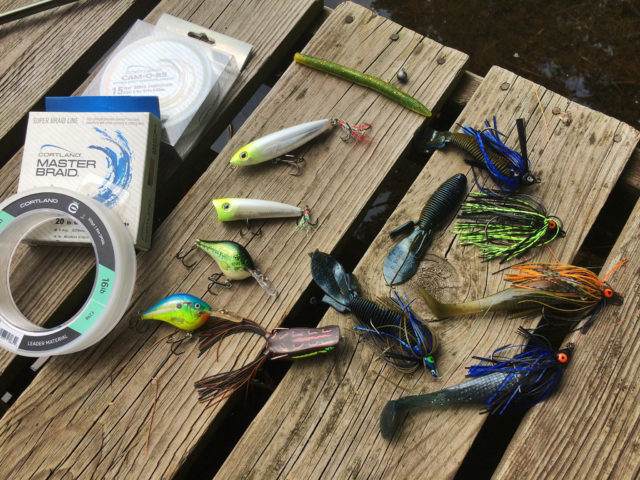
Fishing small lakes is simple. Most are dominated by bluegill forage. You will not need to bring much tackle beyond a few rods and reels, and a basic selection of tackle such as jigs, crankbaits, plastics, and surface lures.
Spring – We start fishing small water as soon as May season opener weekend. On busy holiday weekends such as May opener and again over Memorial Day weekend, it’s wise to visit these waters because there won’t be any other traffic on them, and their fishing can be reliably good. These waters will be the first places to warm, therefore fishing heats up quickly.
Favorite tactics in May are scoping their shorelines and near-shore habitat with search lures such as swimbaits, paddletails, chatterbaits, swim jigs with paddletail trailers, and lipless crankbaits.
My all time top producer of big spring largemouth is a 3” Storm WildEye Shad. It combines the shape and retrieving properties of lipless crankbait and paddletail into one package, resulting in long casts and creating an incredibly lifelike swimming action. With a steady medium retrieve through the shallows, count on big bass finding it and striking mid retrieve. Where big largemouths roam, you can usually get them to commit on these internally weighted, molded, soft compact plastics.
The best big bass days of spring occurs on the first warm and sunny days of May. A southern breeze with sunlight beating down on northern shorelines and shallow bays triggers a ferocious midday and afternoon bite with big fish activity. Focus on near shore vegetation such as emergent lily pads and brown cabbage, heavy wood cover, and bogs with flooded bushes that lead into tamarack swamps.
Always seek shallower lakes that can avoid winter kill events. Eutrophic lakes are generally the best early season fisheries because they are heavily vegetated, fertile with monstrous bass, and warm quickest. However, most are prone to winter kill due to their shallow depths, and struggle to fully recover before fisheries rebuild. Some of them can be options if current flows through, thus avoiding freeze-out catastrophes.
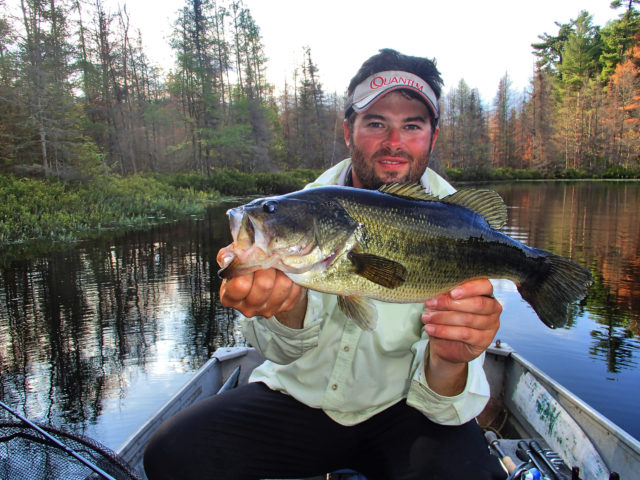
Heavy wood cover, and bogs with flooded bushes that lead into tamarack swamps are big bass magnets on small lakes. Largemouth will hold tight to them in spring and summer.
Summer – By early June, largemouths prep for spawn and can begin nesting. Small lakes are the first in the region to undergo spawning. Additionally, vegetation and weed growth is rich in full bloom.
During summer season, incorporate casting and spinning gear. With majority of the desirable fish in shallows, 3/8 oz. and ½ oz. black and blue weedless jigs with craw and creature trailers pitched and flipped into tight shoreline quarters scores biggest fish. If largemouth are holding in wood and flooded bog shorelines, the jig and creature combo will produce all season long.
Once July rolls around, largemouths disperse throughout the lake. Some will remain in the shallows if that’s the best habitat available, and if water temperature remains cool throughout the remainder of summer.
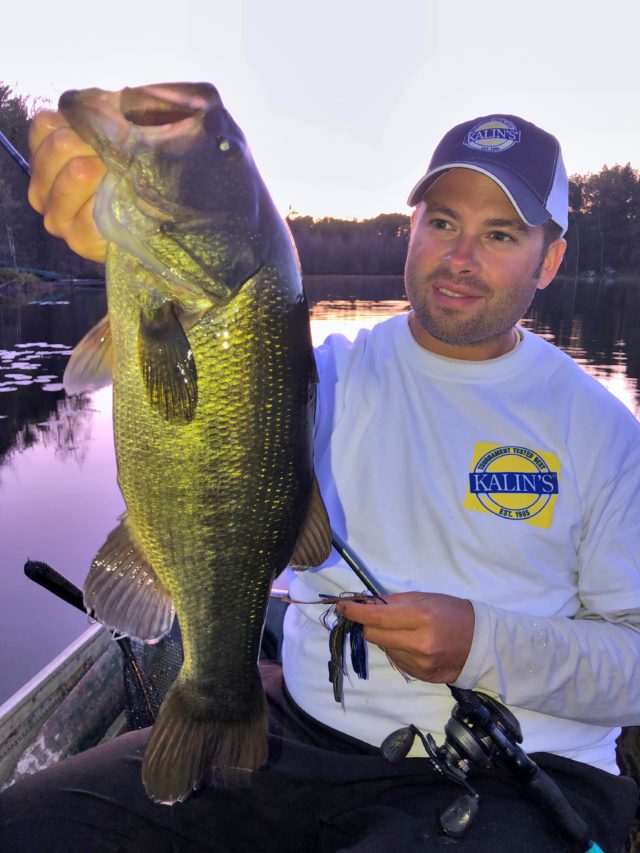
Fishing small waters during the dog days of summer is most difficult due to daytime heat and very warm surface temps that can be pushing up to 85 degrees. Great early morning fishing and night fishing can be experienced on these lakes on hot summer days.
Fishing small waters during the dog days of summer is most difficult due to daytime heat and very warm surface temps that can be pushing up to 85 degrees. Great early morning fishing and night fishing can be experienced on these lakes on hot summer days.
Night fishing can deliver best catches and biggest fish of summer, but know your surroundings before venturing out into the dark and navigating back from dirt roads. Prioritize safety, especially if you are out in the boonies. And don’t get lost. Adding to the allure of fishing these small waters, overnight camping in the state forests is often a welcomed option that adds to the wilderness adventure.
Shallow, dark water ponds can become too hot to fish in summer. Largemouth can become dormant due to heat and low dissolved oxygen levels. Their body condition and weights will drop and fluctuate as a result, necessitating heavy feeding to resume again by late summer. Therefore these fisheries aren’t worthwhile again until after Labor Day.
By mid summer, I prefer targeting only clear water lakes that have maximum depths of 20 ft or more. Largemouths will move out to deep grass and weedlines, or roam the basins and suspend.
At this point, plastics rule the game. Stick baits such as Kalin’s Wacko Worms in baby bass Texas rigged weightless for targeting shorelines, or rigged on a Kalin’s weedless wacky jig for casting deep grass is easy, effective fishing.
For deep water, Carolina rigging worms and lizards, and casting mid-range crankbaits such as Rapala DT-6’s in bluegill and parrot pattern produce well.
Want fish early and late in the day? Don’t forget about throwing surface frogs, buzz baits, and topwaters to weed edges and shoreline slop.
As summer advances, the best lakes will flourish with vegetation, and sections of the lake can overgrow with it. These waters will have the highest fertility, best average fish size, and greatest trophy bass potential.
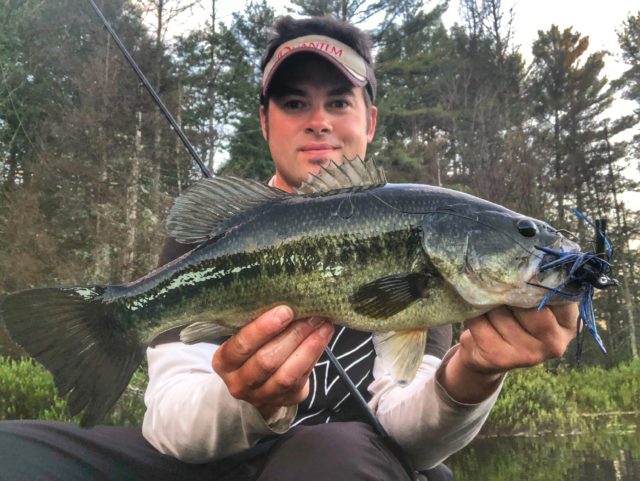
3/8 oz. and ½ oz. black and blue weedless jigs with craw and creature trailers pitched and flipped into tight shoreline quarters scores biggest fish. If largemouth are holding in wood and flooded bog shorelines, the jig and creature combo will produce all season long.
Fall – By Labor Day weekend, the explorations and discoveries begin to subside. Fall is a poor season for exploring new lakes due to shortening day length and rapidly cooling water temperature. My sights and bass fishing pursuits instead go to other venues and big water for smallmouths.
When conditions are right, I still take the time to hit a few trustworthy and reliable big bass ponds. Mid September during the first cool downs of fall can be excellent. Another fall season incentive of fishing these lakes is very few of them ever stratify, so they won’t ever turn over. Also, many of them have the potential for big northern pike, some muskies, walleyes, and very big panfish. Most small lakes in my neck of the woods are naturally reproducing fisheries for all species, therefore catch and release must be prioritized even further.
Deep diving crankbaits, swimbaits and swimming plastics, jigs, and live bait gets used. Good fishing will persist until water temperature falls into the low 50’s. It’ll be early October by then, fish will vacate the shallows, and much of the lake’s biomass will be pre-wintering.
Small lakes warm and freeze the quickest. Their warm-ups and cool-downs are rapid, resulting in shorter growing seasons and fishing productivity that tends to last until early October.
Big Largemouth from Overlooked Destinations
Small lakes and their big bass always bring me back to my youth. Simple fishing and the good old days revisited. They are care-free days of catching bass of all sizes, and without any industry agenda to follow.
Small lakes and big bass are affordable fishing. All it takes is a 4WD vehicle to get you there, a small boat with some electric or gas power, a few multi-purpose rods, and a tackle bag to cover every bass fishing aspect you’ll encounter for the day.
It’s common to get bored fishing small lakes after a few hours, especially if their juice isn’t worth the squeeze. In my neck of the woods, there could be another small lake to go check out less than 10 minutes down the dirt road.
In a generation where fishing pressure is at an all-time high, most bass fisheries throughout the country are being overfished, and the over-use of technology and exploitation & abuse of fisheries follows. Go fish the small lakes you keep ignoring and driving past.
Per my high standards, one out of every few small lakes attempted ever seems to be exceptional. Regardless of outcome, an adventure is experienced, and my appetite for exploration and discovery is savored and appeased. While the fishing is often productive and can be easier, the time and physical effort required getting into them is challenging and not always the case. If it were easy, then everyone else would be doing it too. How fortunate I am, to have a huge number of small lakes that are home to big bass!
Andrew Ragas splits time between the Chicago area and Wisconsin’s Northwoods. Based in Minocqua, WI, he specializes in trophy bass fishing and offers guided trips from May thru October. While big bass is the passion, he dabbles in multi-species as well. He may be visited online at www.northwoodsbass.com


